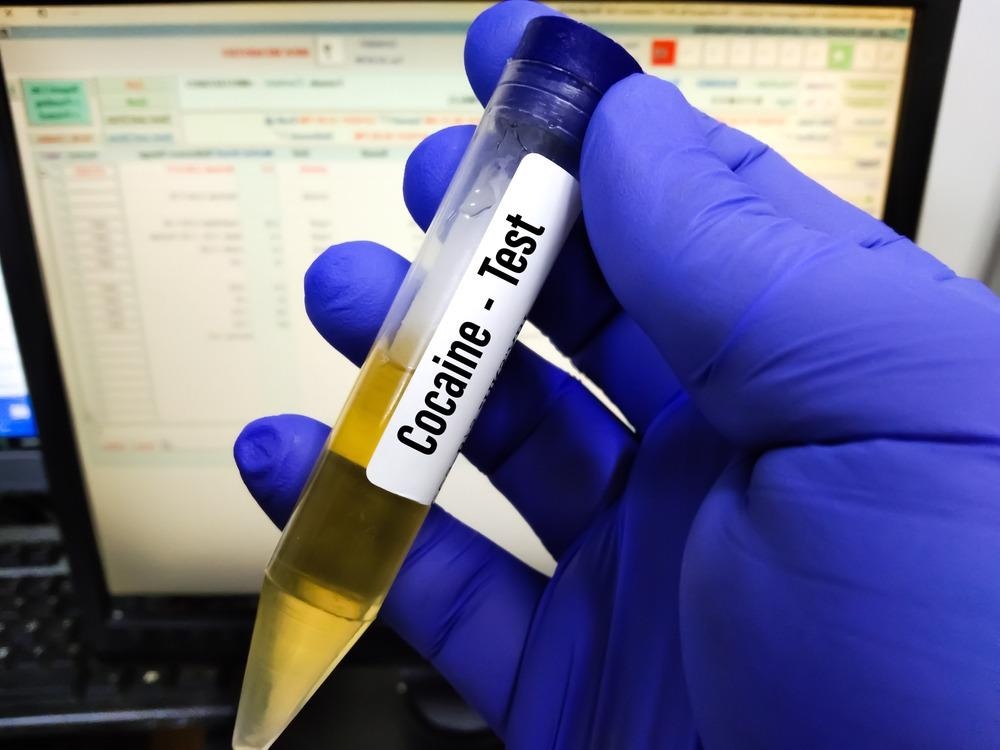In the 2020 World Drug Report, the United Nations Office on Drugs and Crime (UNODC) and the World Health Organization (WHO) reported that about 269 million people worldwide used drugs in 2018, a 30% increase from the estimates from 2009. Since the coronavirus disease 2019 (COVID-19) pandemic began in March 2020, the UNODC estimates that over 275 million people have used drugs globally. This continuous rise in illicit drug use, particularly during the current COVID-19 pandemic, is largely fueled by an increase in extreme poverty exacerbated by unemployment and inequalities that exist worldwide and the rise in mental health conditions.

Image Credit: Arif biswas/Shutterstock.com
In an effort to protect human health and public safety, as well as comply with various legal systems around the world, several accurate and efficient screening and identification methods are available to support the control of illicit drug use worldwide.
Some of the different samples that can be tested for the presence of illicit drugs include pharmaceutical samples, street samples, as well as biological samples like blood, saliva, semen, urine, or hair.
Conventional Methods for Drug Detection and Analysis
Once these samples are collected, they are then sent to analytical chemistry laboratories to confirm the presence of certain drugs and their metabolites. Some of the different analytical techniques used for this purpose include chromatographic and spectroscopic techniques.
The different chromatographic techniques can include gas chromatography/mass spectrometry (GC/MS), liquid chromatography (LC)/MS, high-performance thin layer chromatography (HPTLC), high-performance liquid chromatography (HPLC), reverse phase/HPLC, and HPLC/MS. Comparatively, some of the different spectroscopic techniques that can be used for illicit drug detection and analysis include Fourier transform infrared spectroscopy (FT-IR), nuclear magnetic resonance (NMR), MS, and ultraviolet (UV)-visible and Raman spectroscopy.
Despite the high sensitivity and selectivity of these analytical methods for drug detection purposes, they are also associated with numerous limitations; high costs, bulky volume, the need for trained personnel to operate these systems, and extensive time requirements for the experiment to be completed are some examples.
Sensors and Drug Detection
Due to the limitations of conventional drug detection techniques, biosensors and electrochemical sensors have emerged as alternative approaches that provide simple, rapid, sensitive, and highly accurate results. In particular, electrochemical sensing devices are associated with high sensitivity and selectivity, reduced costs, simple operation, portability, and the ability to provide results in real-time with little or no pre-treatment of the samples.
Typically, an electrochemical sensor will consist of a specific recognition element, to which the target compound binds to in order to provide a readout value. To date, several different recognition elements have been incorporated into electrochemical sensors, which range from natural to artificial recognition elements that are immobilized on a working electrode within the sensor.
Natural recognition elements can include microorganisms, antibodies, aptamers, enzymes, tissues, deoxyribonucleic acid (DNA) probes, and cells, while artificial recognition elements can include synthetic peptides and molecular imprinted polymers (MIPs).
An Overview of Smartphone Sensors
To date, several different smartphone-based sensors have been developed to assist law enforcement officials in detecting heavy drinking episodes in young adults. One example of this application includes the Random Forest (RF) model, which was found to have a 90.9% accuracy in detecting high-risk drinking, as defined as the consumption of more than 4-5 drinks.
In addition to smartphone sensors developed to detect alcohol, a few recent studies have discussed the potential utility of this technology in detecting acute cannabis consumption. For example, one study collected accelerometer and gyroscope data to detect acute cannabis use as defined as 3% or 7% tetrahydrocannabinol (THC) levels in 10 participants that were found to have an accuracy of 92%.
Recent Advances in Smartphone Sensors and Intoxication Detection
To arrive at the study results, the researchers employed multiple machine learning classifiers, including the Light Gradient Boosting Machine (LGBM) model to determine which classifier was more accurate in distinguishing whether the study participant was “not intoxicated,” “low-intoxicated,” or moderate-intensive intoxicated.”
Furthermore, three machine learning models that included time features of the week and time of date (DT), smartphone-based sensors only (S), and smartphone-based sensors and time features combined model (DTS) were used.
Taken together, the machine learning model that combined smartphone-based sensors with time features provided the most accurate results in determining cannabis intoxication. Moreover, the smartphone sensors, combined with the time-based features were able to provide automated and continuous detection of cannabis intoxication in the daily life of young adults.
Read more about this topic through our interview: Detecting Cannabis Intoxication Using Smartphone Sensors.
Challenges and Future Outlook
While significant progress has been made in advancing the feasibility of using smartphone sensors for drug detection purposes, there remains a significant lack of sensors that can directly detect drug consumption, rather than relying on other sensors like accelerometers and GPS. Therefore, future work aimed at improving the capabilities of current smartphones could be useful, particularly in emergency situations where narcotics and other highly dangerous drugs have been used.
Learn more about smartphone sensors here.
References and Further Reading
United Nations (2021) COVID pandemic fueling major increase in drug use worldwide: UN report [Online]. Available at: https://news.un.org/en/story/2021/06/1094672
Ren, S., Zeng, J., Zeng, Z., & Shi, H. (2021) Perspective and application of modified electrode material technology in electrochemical voltametric sensors for analysis and detection of illicit drugs. Sensors and Actuators A: Physical 329. Available at: https://doi.org/10.1016/j.sna.2021.112821
De Rycke, E., Stove, C., Dubruel, P., et al. (2020) Recent developments in electrochemical detection of illicit drugs in diverse matrices. Biosensors and Bioelectronics 169. https://doi.org/10.1016/j.bios.2020.112579
Disclaimer: The views expressed here are those of the author expressed in their private capacity and do not necessarily represent the views of AZoM.com Limited T/A AZoNetwork the owner and operator of this website. This disclaimer forms part of the Terms and conditions of use of this website.